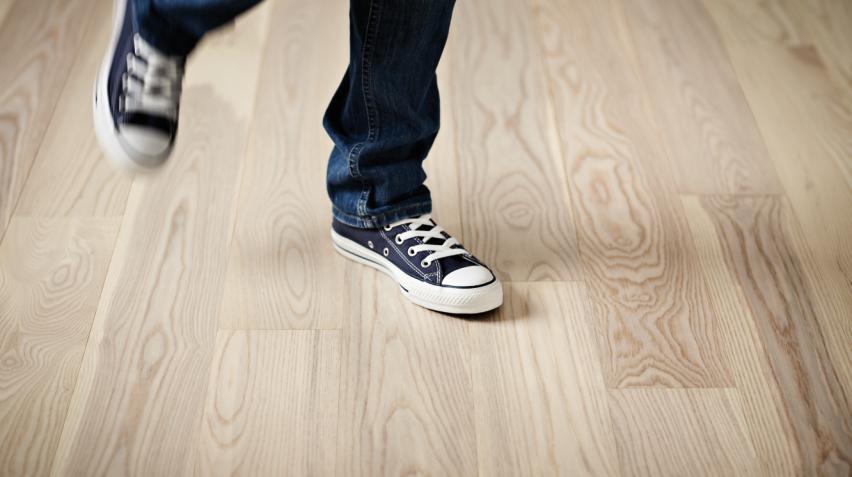Choosing the Right Wood Floor Polish: What Works for Your Floor Type?
Maintaining the appearance and durability of your wood floors depends on using the right polish for your specific floor type. With so many products and finishes available, it can be challenging to know which solution will best protect and enhance your floors. In this guide, you’ll find practical information on how to identify your floor’s finish—whether lacquered, oiled, or waxed—and straightforward advice on choosing a suitable polish or maintenance product. Learn how the right care routine can help preserve your floors’ natural beauty and ensure they remain a lasting feature in your home.
Understanding Your Wood Floor’s Finish
Before choosing a wood floor polish, it’s essential to know exactly what type of finish your floor has. The finish not only determines the look and feel of your hardwood but also affects how you should care for it. Most wood floors in private homes fall into three main categories: lacquered, oiled, and waxed. Identifying your finish can be as simple as checking the sheen and texture—lacquered or polyurethane floors usually have a distinct, glossy surface, while oiled floors feel more natural and matte. Waxed finishes are less common in modern homes but are recognized by their soft sheen and smooth touch.
Why Choosing the Right Wood Floor Polish Matters
Selecting a wood floor polish that matches your floor’s finish is key to maintaining both its beauty and durability. The right product protects the wood, prevents wear, and keeps your floor looking its best for years to come. Using a polish that’s not suited to your floor type can lead to residue buildup, slippery surfaces, or even damage that requires costly repairs. For homeowners, investing a little time in understanding what works for your specific wood flooring will pay off in the long run.
Which Wood Floor Polish Is Best for Your Floor Type?
Every wood floor benefits from a tailored approach. Here’s what to consider depending on your floor’s finish:
Lacquered and Polyurethane Floors
For lacquered or polyurethane finishes, opt for a wood floor polish designed specifically for synthetic, sealed surfaces. These polishes clean and protect without making the floor slippery or leaving behind a greasy film. Avoid wax-based products, as they can interfere with future recoating and create an uneven appearance. For ongoing care and detailed tips, refer to the maintenance tips for lacquered wood floors.
Oiled Wood Floors
Oiled floors require products that penetrate and nourish the wood, such as maintenance oils or soaps with a slight grease content. Instead of traditional polish, these products restore the protective layer and enhance the wood’s natural character. Regular re-oiling may be required to keep the surface resilient and beautiful. For more advice, see the maintenance guide for oiled wood floors.
Waxed Wood Floors
Waxed floors are best maintained with a compatible paste wax. This type of wood floor polish helps maintain the low-sheen glow and protects the wood, but it does need more frequent upkeep. Avoid using water or solvent-based polishes, as they can break down the wax layer.
Spotting Rare Finishes
While less common in today’s homes, finishes like shellac are still occasionally found in older houses. These floors typically do not benefit from modern polishes and require special care—gentle cleaning and minimal moisture are key.
How to Apply Wood Floor Polish Correctly
Proper application ensures you get the full benefit from your chosen wood floor polish. Here are some steps to follow:
- Always start with a clean, dust-free floor. Use a microfiber mop to remove all debris.
- Read and follow the manufacturer’s instructions on your chosen polish.
- Apply the polish in thin, even layers, working with the grain of the wood.
- Allow adequate drying time between coats if multiple layers are recommended.
- Avoid walking on the floor until it is completely dry to prevent marks and uneven finish.
Tips for ongoing maintenance:
- Dust or sweep floors regularly to prevent scratches.
- Address spills immediately with a dry or slightly damp cloth.
- Re-polish or re-oil according to your floor’s maintenance schedule, not just when it looks dull.
If your floor is oiled, using a dedicated maintenance oil helps ensure lasting protection and a naturally beautiful result.
Maintenance Tips for Long-Lasting Beautiful Floors
Keeping your hardwood floors in excellent condition goes beyond just polishing. Here are some practical tips:
- Place doormats at entrances to reduce dirt and grit.
- Use felt pads under furniture legs to prevent scratches.
- Remove shoes indoors to minimize abrasion.
- Avoid excessive water or steam mops, which can damage both wood and finish.
- Schedule periodic deep cleaning and reapplication of polish or oil as needed.
Quick “Do’s and Don’ts”:
- Do: Dust often, clean spills quickly, follow your floor’s specific care recommendations.
- Don’t: Use abrasive pads, harsh chemicals, or generic all-purpose polishes.
For additional guidance on maintaining specific finishes, consult the guide to cleaning soap-treated hardwood floors.
Choosing Sustainable and Safe Wood Floor Care Products
When selecting a wood floor polish, consider products that are both effective and safe for your home environment. Look for options that have been certified for indoor air quality and produced with sustainability in mind. Junckers is committed to responsible wood sourcing and product safety, ensuring all surface treatments are developed with both performance and the planet in mind. Explore Junckers’ approach to sustainability, environment, and quality to make informed decisions for your home.
Get Advice from Junckers Experts
If you are uncertain about which wood floor polish is right for your floor type, Junckers’ team is here to help. For personalized guidance on wood floor care and maintenance solutions, contact our experts.
Frequently Asked Questions About Wood Floor Polish
Can I use any wood floor polish on my floor? add
No. Always match the polish to your floor’s finish—lacquered, oiled, or waxed—to avoid damage.
How often should I polish or re-oil my hardwood floor? add
Frequency depends on usage, but most homes benefit from re-polishing or re-oiling once or twice a year
What’s the difference between polish and maintenance oil? add
Polish is typically used for sealed surfaces like lacquered floors, providing shine and protection. Maintenance oil is for oiled floors and works by nourishing and restoring the wood.



